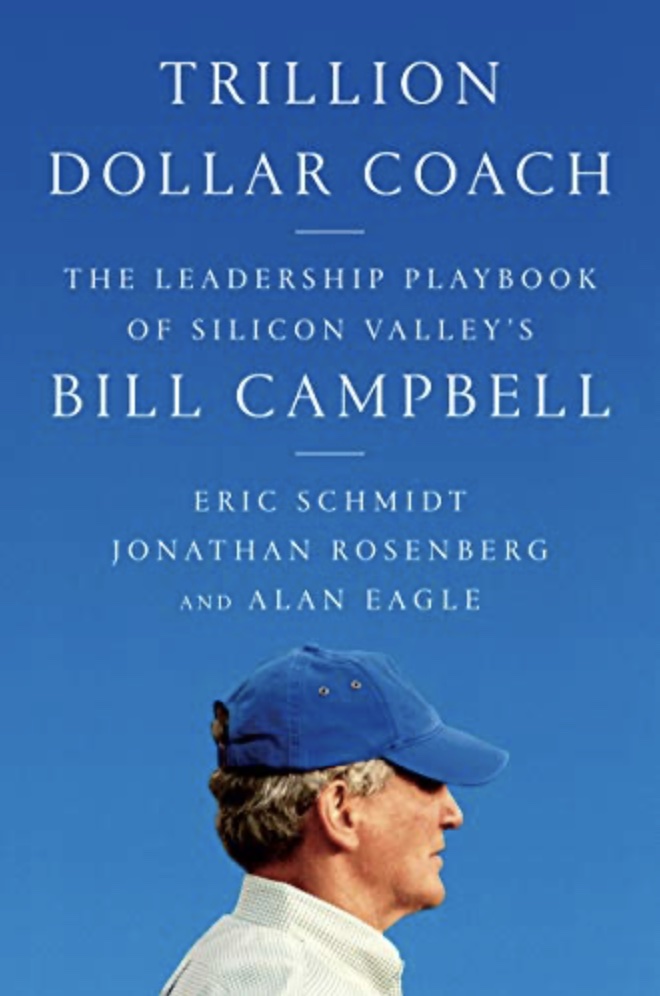Key Quote:
“Great coaches lie awake at night thinking about how to make you better. They relish creating an environment where you get more out of yourself. Coaches are like great artists getting the stroke exactly right on a painting. They are painting relationships. Most people don’t spend a lot of time thinking about how they are going to make someone else better. But that’s what coaches do. It’s what Bill Campbell did, he just did it on a different field.”
Key Points and Concepts
The Caddie and the CEO
From caddies to CEOs, Bill created a level of love and devotion in the people he met. He treated everyone the same way and created connections. He built friendships with people from many different walks of life. At his funeral service, it wasn’t a gathering of people who were only paying their respects; it was a gathering of people who loved Bill. While there were CEOs and executives present, there were also waiters, staff from a sports bar, and friendships that lasted multiple decades.
As a coach within Google, Bill became masterful at identifying tensions and figuring out how to resolve them. He would counsel the executives and often sat in on the meetings. Rather than providing opinions on products and strategy, he made sure the team was communicating and that the tensions and disagreements were brought to the surface and discussed (p. 15).
Bill believed that a critical factor for success was for teams to act like communities, “integrating interests and putting aside differences to be individually and collectively obsessed with what’s good for the company” (p. 22).
Your Title Makes You a Manager. Your People Make You a Leader.
As Google experimented with running a fast-moving product development team without managers, Bill spoke with the engineers and learned that they wanted someone from whom they could learn something and someone who could help them make decisions. The managers helped to coordinate resources and resolve conflicts (pp. 33-34). “Think that everyone who works for you is like your kids, help them course correct, and make them better” (p. 48).
Bill believed that leadership evolved from management excellence. People want to feel valued, so it’s important to listen and pay attention (p. 35).
It’s the People Manifesto: Bill often repeated this manifesto. “Great managers help people excel and grow.” Trusting the team “means freeing people to do their jobs and to make decisions. It means knowing people want to do well and believing that they will.” The top priority of a manager is the “well-being and success of their people” (p. 39).
Trip Reports: Bill encouraged teams to build rapport and better relationships by starting team meetings with more personal, non-business topics. It allowed team members to get to know each other and get everyone involved in the meeting from the outset. For example, if Eric Schmidt returned to Google from a trip, he would put a Google map on the screen with pins dropped on the cities where he visited and the interesting things he had observed (pp. 42-45).
Five Words on a Whiteboard: Bill had structure and took time to prepare for his one-on-one meetings with team members. In a one-on-one meeting with Bill, the meeting took place off-site at Bill’s office. The meeting would begin with informalities and small talk that was often meaningful and layered. Soon after, Bill and the coachee would write five words on a whiteboard and then would reveal the topics simultaneously. After revealing their topics, the two would merge the words to form an agenda for their conversation, instead of simply leading with Bill’s own agenda (pp. 46-48).
The Throne Behind the Roundtable: “The manager’s job is to run a decision-making process that ensures all perspectives get heard and considered, and if necessary, to break ties and make the decision” (p. 57). Bill would point out that teams should strive for the best idea and not consensus because the goal of consensus leads to groupthink.
• Lead Based on First Principles: “Define the first principles for the situation, the immutable truths that are the foundation for the company or product and help guide the decision from those principals”. (p. 60)
• Bill believed that the leader’s job was to describe and remind the team of their first principles to make easier decisions. For example, an executive at Tellme consulted Bill and then relied on the immutable truths as a company when making the decision to merge with AT&T and then later Microsoft (pp. 57-60).
Build an Envelope of Trust
The most important currency in a relationship is trust. To Bill, trust means you keep your word, loyalty, integrity, and discretion.
Only Coach the Coachable: Leadership is not about you; it’s about serving something bigger whether it’s a company or a team. Bill believed that people who are coachable are curious, want to learn new things, and are brutally honest with themselves (p. 85-87).
Practice Free-Form Listening: While in a coaching session with Bill, you had his undivided attention. He wasn’t looking at his phone, emails, or texts. Even when he was coaching his little league teams, he held by this standard. Bill advised to give your full undivided attention, listen carefully, and don’t think ahead to what you’re going to say next. There is an order to it that allows people to feel understood and supported (pp. 89-92).
No Gap Between Statements and Facts: When providing feedback, be relentlessly honest and candid. But, also couple negative feedback with caring feedback. Former Google Executive, Kim Scott, explains radical candor as “saying what you really think in a way that still lets people know you care.” Bill led by this example and would provide the feedback as soon as possible and if it was negative, he would deliver it privately (pp. 92-97).
Be the Evangelist for Courage: Bill’s perspective was that courage is hard and people are afraid of taking risks for fear of failure. Others noted that Bill “blew confidence into people. He believed you could do things, even when you yourself weren’t so sure, always pushing you to go beyond your self-imposed limits” (pp. 99-103).
Team First
If you get the team right, you’ll get the issue right. When faced with an issue, Bill believed it was more important to focus on the team tasked with resolving the issue. By being empathetic and caring about the team, teams are more effective.
Work the Team, Then the Problem: Bill was known to be a “coach of teams. He built them, shaped them, put the right players in the right position, cheered them on, and kicked them in their collective butt when they were underperforming” (p. 109). Bill’s approach was to focus on the team, not the problem. He was consumed with team building, assessing talents, and finding the doers.
Pair People: By assigning tasks to a couple of people who don’t usually work together, it develops trust between the two people regardless of the nature of the work. While the deliverable matters, the opportunity to build trust is invaluable to the team’s success (pp. 123-124).
Because peer relationships are so vital to strong teams, Bill helped design a peer feedback survey that was used for years at Google. It elicited opinions on four areas of a person’s performance including people’s behaviors in meetings (pp. 125-126).
The Power of Love
Bill would bring people in with his profanities and hugs. He would go deep, learn names, ask questions, look at their photos, and most importantly care. His compassion for the team was seen and felt by many people he worked with. He advised to show up when things get rough, understand, and truly care about people, but don’t fake it (pp. 160-165).
The Percussive Clap: When Apple would release a new product, Bill would sit in the front row and clap, cheer, double fist pump, and get so excited for the team. He showed the love for the work they were doing. An executive at Google, Clay Bavor, incorporates the “Bill Campbell clap” – the BCC – into the culture of the team to cheer demonstrably for people and their success (pp. 166-168).
Always Build Communities: While some people endow scholarships, Bill endowed a Super Bowl trip. Bill built community instinctively. For example, he sponsored high school reunions and organized get-togethers at a local bar. Because communities are built inside and outside of work, he realized that a place is much stronger when people are connected (pp. 168-173).
Schmidt, Rosenberg & Eagle. (2019). Trillion Dollar Coach: The Leadership Playbook of Silicon Valley’s Bill Campbell. New York: HarperCollins Publishers.

“Great coaches lie awake at night thinking about how to make you better. They relish creating an environment where you get more out of yourself. Coaches are like great artists getting the stroke exactly right on a painting. They are painting relationships. Most people don’t spend a lot of time thinking about how they are going to make someone else better. But that’s what coaches do. It’s what Bill Campbell did, he just did it on a different field.”
“As Google experimented with running a fast-moving product development team without managers, Bill spoke with the engineers and learned that they wanted someone from whom they could learn something and someone who could help them make decisions. The managers helped to coordinate resources and resolve conflicts.”
“If you get the team right, you’ll get the issue right. When faced with an issue, Bill believed it was more important to focus on the team tasked with resolving the issue. By being empathetic and caring about the team, teams are more effective.”
